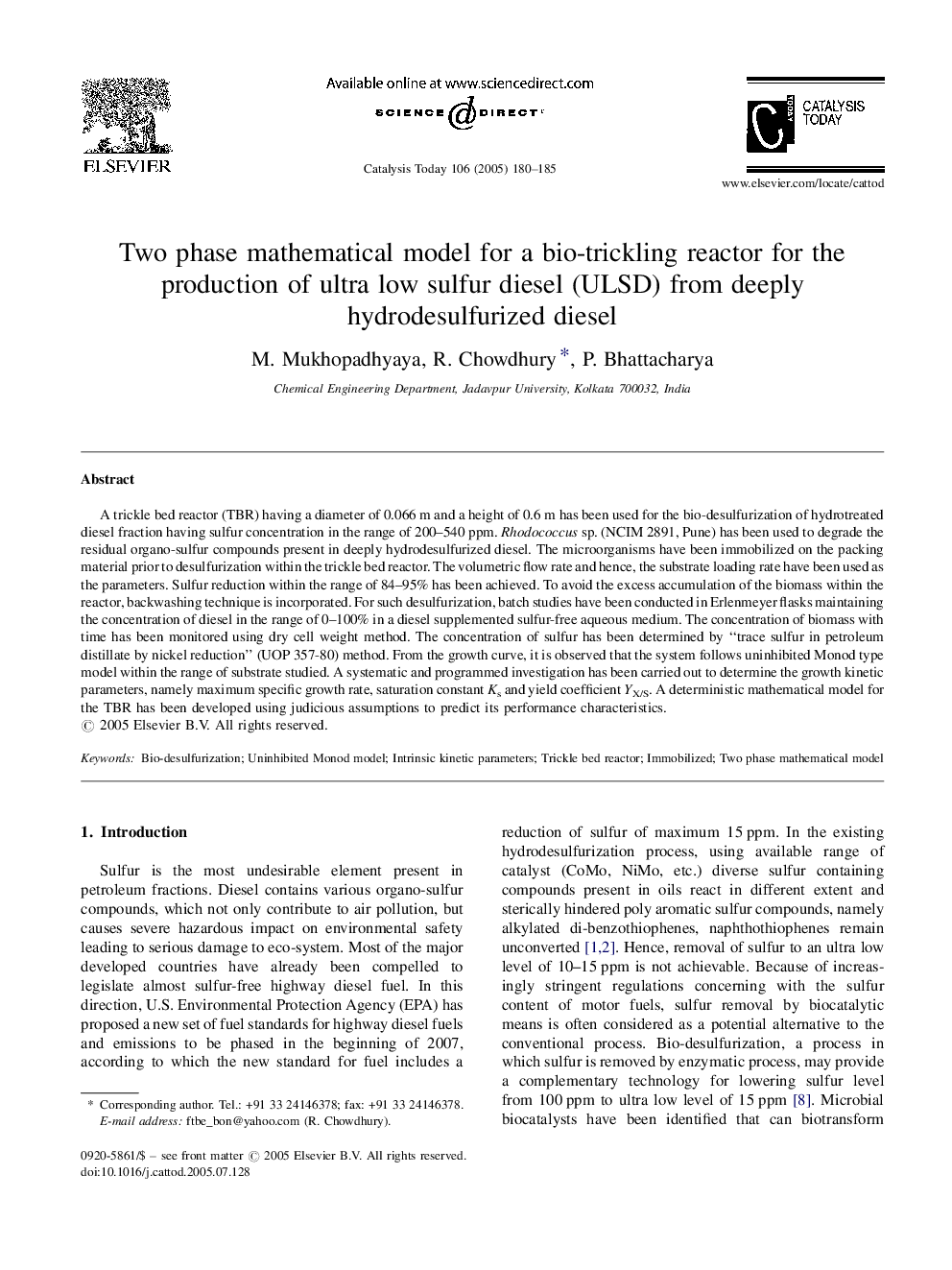| Article ID | Journal | Published Year | Pages | File Type |
|---|---|---|---|---|
| 9610290 | Catalysis Today | 2005 | 6 Pages |
Abstract
A trickle bed reactor (TBR) having a diameter of 0.066Â m and a height of 0.6Â m has been used for the bio-desulfurization of hydrotreated diesel fraction having sulfur concentration in the range of 200-540Â ppm. Rhodococcus sp. (NCIM 2891, Pune) has been used to degrade the residual organo-sulfur compounds present in deeply hydrodesulfurized diesel. The microorganisms have been immobilized on the packing material prior to desulfurization within the trickle bed reactor. The volumetric flow rate and hence, the substrate loading rate have been used as the parameters. Sulfur reduction within the range of 84-95% has been achieved. To avoid the excess accumulation of the biomass within the reactor, backwashing technique is incorporated. For such desulfurization, batch studies have been conducted in Erlenmeyer flasks maintaining the concentration of diesel in the range of 0-100% in a diesel supplemented sulfur-free aqueous medium. The concentration of biomass with time has been monitored using dry cell weight method. The concentration of sulfur has been determined by “trace sulfur in petroleum distillate by nickel reduction” (UOP 357-80) method. From the growth curve, it is observed that the system follows uninhibited Monod type model within the range of substrate studied. A systematic and programmed investigation has been carried out to determine the growth kinetic parameters, namely maximum specific growth rate, saturation constant Ks and yield coefficient YX/S. A deterministic mathematical model for the TBR has been developed using judicious assumptions to predict its performance characteristics.
Keywords
Related Topics
Physical Sciences and Engineering
Chemical Engineering
Catalysis
Authors
M. Mukhopadhyaya, R. Chowdhury, P. Bhattacharya,
